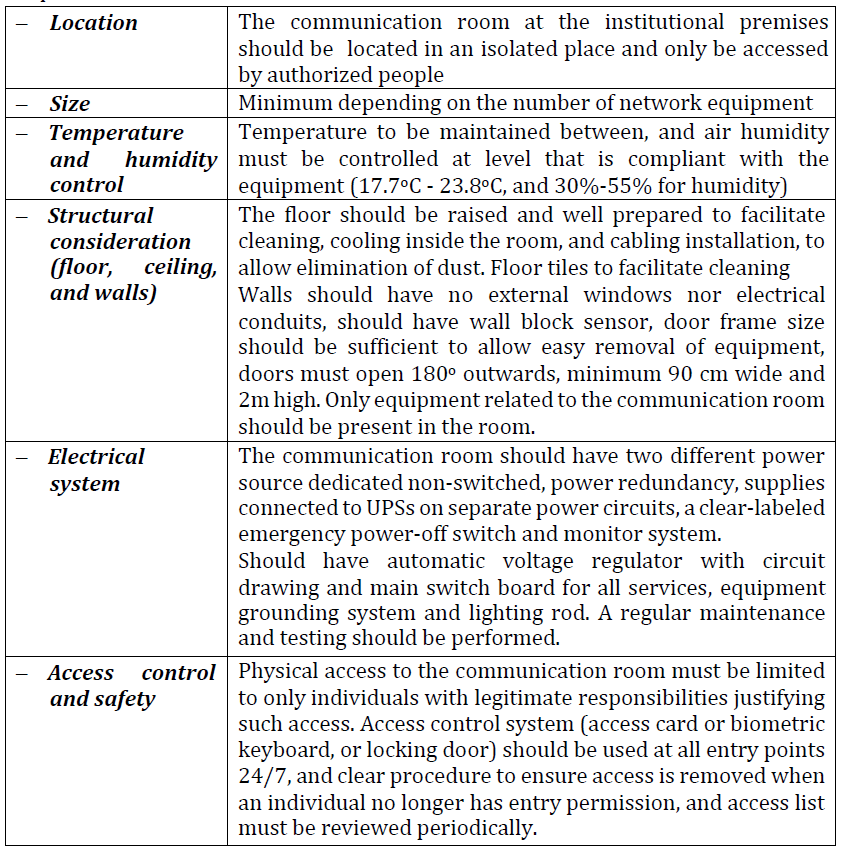Network Implementation
- Network equipment: network equipment and devices comprising the core network infrastructure to provide connectivity and security features include rack, minimum routers, switches, and access points, as well as a firewall.
- Network cabling, labeling and physical layout: any network structure should consider latest cabling and labeling standards.
- Communication room: institutions should have communication rooms at their premises when proven necessary and should comply with the following minimum requirements:
table here
In addition to the above minimum requirements, the following are guidelines for network equipment in the communication room:
− Switches: small medium and large institutions are advised to use 24 ports, PoE,
10/100/1000, 4 T/Small Form-Factor Pluggable (SFP) LAN Base image. A 48 ports switch may be used for larger institutions.
− UTP data patch panels: should be of CAT6, 24 ports or more depending on latest technology.
− Routers: should support high-bandwidth module-to-module communication at
higher speeds based on the platform, some of the 10/100/1000 Ethernet ports can support small-form factor pluggable (SFP) based on connectivity in addition to RJ-45 connections, enabling fiber or copper connectivity.
− Firewall: latest firewall network security should be implemented. (For more details on requirements refer to Cyber Security directives)
Access Points: the number of access points may vary depending to the building configuration, advisable wireless standards are 802.11a/b/g/n/ac (2.4 GHz/5
GHz)
− LAN Ethernet cabling: CAT6 FTP or advanced types.
- Documentation: this includes network drawings, network connection and configuration information, addresses of all devices on the network with static IP addresses, and log
books.documents. The document versions should be reviewed periodically, and any changes should be tracked.


